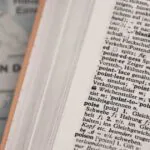
How to Format Dates in the US, UK and Australia
Hello, reader.
You look lovely today.
We at Knowadays know this may seem a little forward, but… what would your dream date be?
Our dates aren’t terribly romantic, but they’re always formatted impeccably. Yes, today we’re talking about the finer points of formatting dates in writing.

This could be us, but you’re an anonymous reader, we’re a proofreading course, and we don’t have a pug.
Regional Differences in Date Format
The main issue that determines date format is where you are. For instance, there is a different between the UK and Australian date format and the one used in the US: Dates in the UK Australia typically read day/month/year, while those in the US read month/day/year.
So the following would be correct in UK or Australian English:
5/8/1981
5 August 1981
But in US English, the same date would read:
8/5/1981
August 5, 1981
This is fairly well known, but it is easy to forget if you usually use one format and are checking a document that requires another. It is thus vital to know which dialect your client has asked you to use when proofreading their work.
Style
In formal writing, it would be unusual to use an all-numeric date format. The date 5/8/1981 would look out of place in an academic document, for example, so you would usually amend it to say 5 August 1981 instead. However, using a shorthand version of the date is perfectly acceptable in many kinds of writing (e.g. posters, newsletters and other informal documents).
Note that, even in formal writing, we use numerals for the day. This applies unless the number is part of the standard name of a notable day, such as with the Fourth of July. Beyond that, the best date format to use will depend on the client’s preference or their chosen style guide. For instance, in a UK document, any of the following would be acceptable:
5 August 1981
5th August 1981
5th Aug. ‘81
the 5th of August 1981
If you are unsure of the best format, ask the client if they have a style guide or preference. If not, simply ensure that dates are formatted consistently throughout the document.
Becoming A Proofreader
Our Becoming A Proofreader course covers everything you need to know to proofread documents written in British, American, and Australian English. Sign up for some free lessons today!



